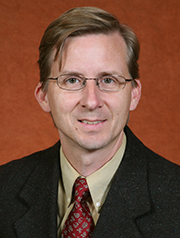June 2009
One advantage of having a world-class simulation center is being able to share it in ways that will lead to improved public health. In mid-June, the College of Medicine provided a training exercise in which public-health workers and others were introduced to the concept of managing and containing a threat to community health.
Though it involved scenarios including anthrax, smallpox and radiation from a dirty bomb, the exercise took place in a safe environment under controlled conditions. Dr. Steve Quintero, medical director of the Charlotte Edwards Maguire, M.D. and Tallahassee Memorial HealthCare Center for Clinical Simulation, said it’s one example of how the College of Medicine contributes to improving public health.
“To my knowledge, this is the first time that high-fidelity simulation has been included in a master’s-level public-health training, at least in the state of Florida,” Quintero said. “I think it has broader implications and ramifications for the future of health-care training in this state and perhaps nationally. The FSU College of Medicine is proud to have contributed its faculty, staff and high-tech facility.”
The training exercise took place as part of the Florida Public Health Institute (FPHI) master course in applied public health. Nine universities across the state, along with state and local health departments, participated.
Such an exercise requires a significant amount of behind-the-scenes preparation. Quintero said people had to be taught the medical histories of these simulated patients and actually speak for them through an offstage microphone. And the simulated patients, or manikins, had to look the part. Quintero said the special effects of radiation burns, trauma, smallpox and anthrax were achieved with putty, wax, makeup and a lot of creativity.
“The simulations were amazing,” said participant Chuck Wells, assistant director of public health research for the Florida Department of Health. “Those of us participating were in awe. For a brief moment we got the opportunity to walk in the shoes of the health-care providers. It awakened us to the seriousness of treating a fellow human being, and the challenge of unraveling a medical mystery to arrive at a diagnosis and plan of treatment.
“All this was complicated by the fact that our scenarios dealt with possible chemical and biological agent exposures, which helped us to recognize the additional responsibility of dealing with collateral issues, namely protecting fellow health-care providers already exposed before it was clear what the risks were, and mitigating actions to prevent further exposures and harm from occurring.”
FPHI’s mission is to “advance the knowledge and practice of public health to promote, protect and improve the health of all.” It promotes improvements in health through advocacy, community education, training of the health workforce, and basic and applied research.


